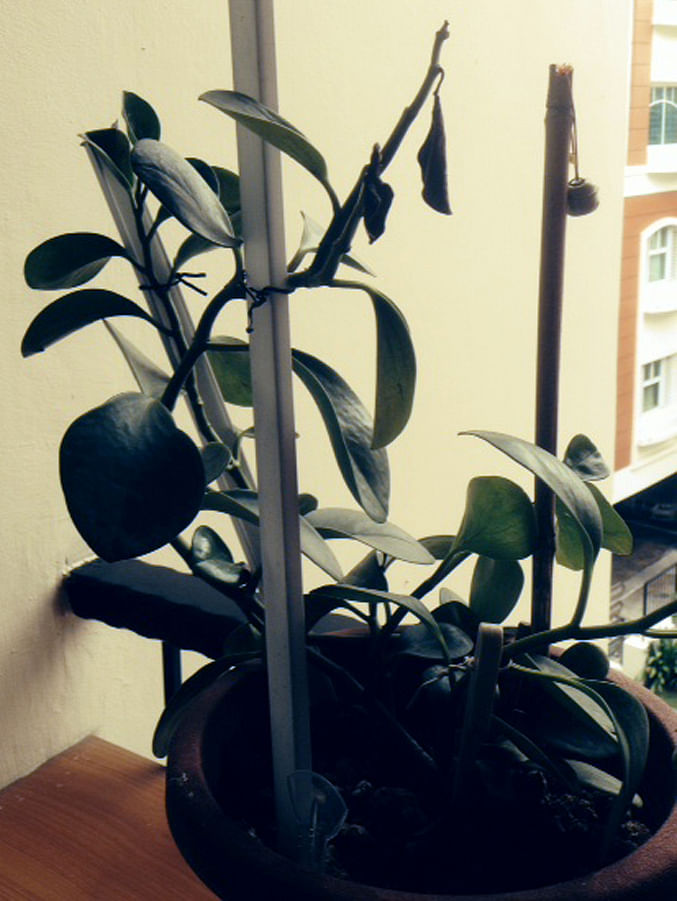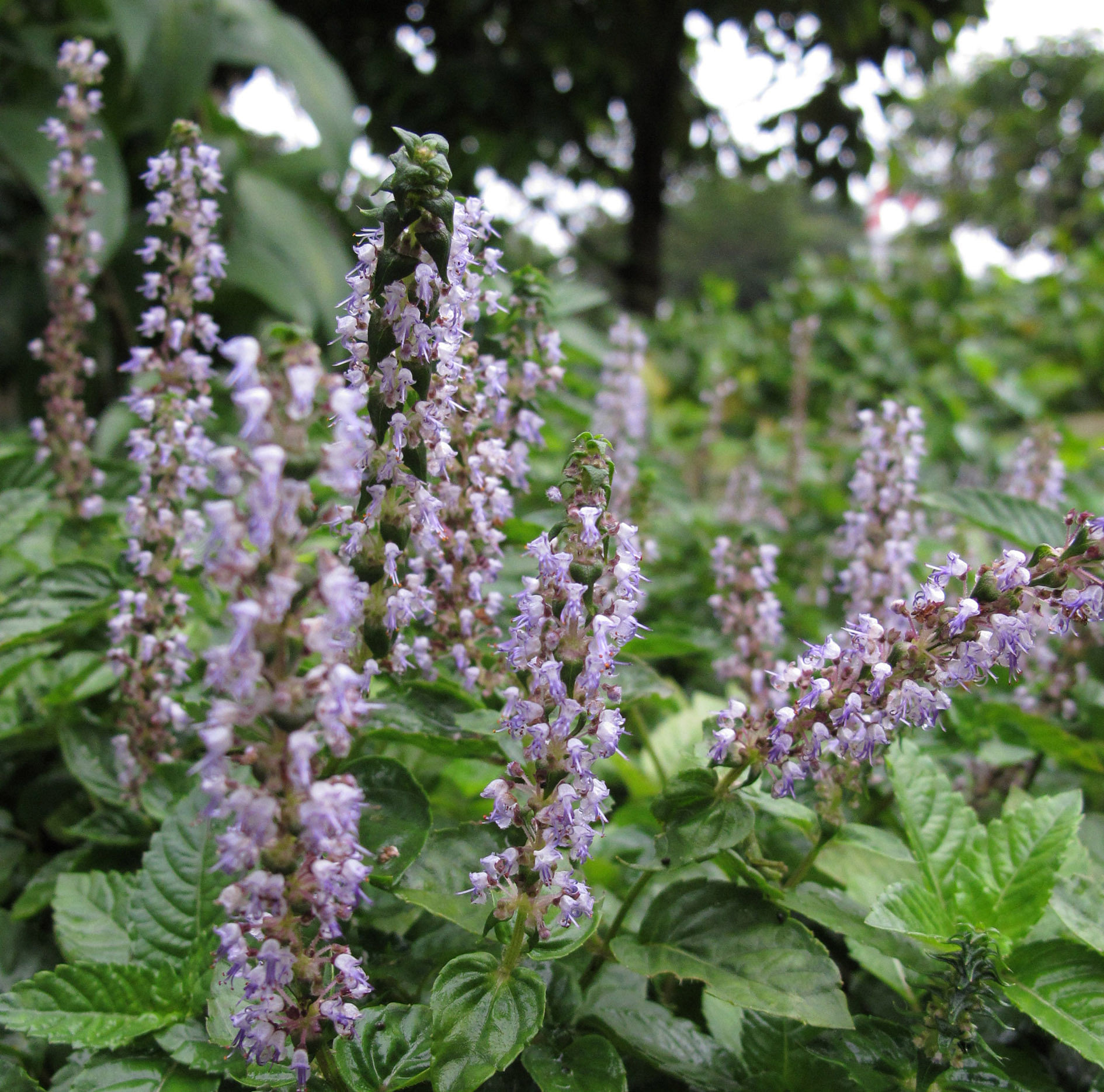Shade needed for Common Sterculia sapling to flourish
I chanced upon this small tree along a road in Braddell two years ago. I managed to germinate the seeds, but the plant sprouted only a few leaves. They dropped off, leaving a bare, straight stem. The plant grew 30cm tall in a pot. What is it?
Chan Wen Yan
The tree appears to be a species of Sterculia and it is likely to be the Sterculia parviflora, which has been widely grown along the roads of Singapore.
It has common names such as Common Sterculia, Kelumpang Burung, Kelumpang Gajah and Samrong, and it is a species native to the region.

The young plant you have may require some shade at this stage and should be grown in a protected place without constant winds.
The sapling needs to be grown in a suitably sized pot to ensure that there is sufficient growing space and media to provide it with moisture and nutrients.
The lack of root space in a small pot will cause the plant to dry out too quickly and lead to the shedding of leaves.
When grown under optimal conditions and in the ground, the tree can reach to between 16 and 30m in height. Along the roads, you can see trees of about 3 to 5m tall that flower and fruit.

Grow Baby Rubber in a protected spot with filtered sunlight
This indoor green plant appears to be unhealthy lately. A few new leaves have shrivelled. Why does this happen?
Anthony Chng
The plant is commonly called the Baby Rubber Plant and botanically known as Peperomia obtusifolia. It grows best in a well-draining media and should be allowed to dry out a little before the next watering.
Overwatering or a growing media that holds too much water can lead to rotting of the plant. The stem bases become soft and the plant will topple over.
In some cases, the leaves of the plant will shed due to the lack of water uptake as the stems or roots have rotted away.
If this is happening, cut healthy stems off and put them in a pot of suitable growing media for them to produce new roots.
If new leaves are shrivelling, it could be due to an overly dry and windy location.
Is your plant located in a very windy place or did you forget to water it for prolonged periods?
Such factors can cause the new, tender leaves to shrivel and drop. You may want to grow the plant in a protected location if this is the case.
Note that indoor plants are more shade-tolerant, but they still need some sunlight to thrive and stay healthy.
For the Baby Rubber Plant, it grows best in a location with filtered sunlight for at least four hours daily.
Insufficient sunlight will lead to an unhealthy plant that is prone to attacks by pests and diseases.

Tip: Creeper used for chin chow dessert
The popular black chin chow jelly dessert is made from the plant that is botanically known as Platostoma palustre. It is a creeper that belongs to the mint family (Lamiaceae).
It makes a nice groundcover plant for sunny and semi-shaded areas. It prefers moist, well-draining soil and propagates easily from stem- cuttings. Occasionally, it produces erect sprays of blue flowers.
The chin chow jelly is made from the dried stems and leaves of the plant. These are available at most Chinese medicine halls.
It involves boiling the plant material in water and then adding agar agar powder and sugar to make the dessert

Dormant Blood Lily can regrow
What is this plant? It grows from a bulb and the leaves are thick and waxy.
Chua Yeou Wei
What you have may be a plant that is commonly called the Blood Lily (its botanical name is Scadoxus multiflorus).
The lance-shaped leaves narrow towards the base to form a short pseudostem.
It is often confused with plants from the genus Haemanthus, which produce very similar-looking flowers. But plants from the latter genus do not have short pseudostems and their leaves rest on the ground.
This plant can be grown under either direct or filtered sunlight. It has a period of growth, flowering and dormancy.
When it approaches dormancy, the leaves stop growing and the plant goes into a period of rest before regrowing again.
During dormancy, it is often necessary to keep the soil slightly dry to keep the bulb from rotting.
Once growth resumes, you can water and fertilise the plant again to promote robust growth and prolific flowering.

Cut off infected part of Desert Rose to save it
The bark of my Desert Rose plant is rotting and peeling. The plant seems to be infected by parasites and part of the root is turning soft. How do I save it?
Fong Swee Chong
The affected part of your Desert Rose (its botanical name is Adenium obesum) may have been infected by a bacteria or fungus.
A prior injury could have allowed the pathogens to enter and infect the plant. It could also be due to overwatering or an overly moisture- retentive soil mix.
What you can do now is to use a sterile, sharp knife to cut off the infected portion. Next, apply fungicide powder to the cut portion and let the wound heal and seal up.
For the time being, avoid watering the plant until the wound has healed completely. The time the plant takes to heal depends on how large a portion has been cut away.
If the infected portion is overly large and the infection continues to spread, you may want to discard the plant.
If it is a prized cultivar, you may want to cut the top growing branches and graft the stems onto a new healthy root stock.
• Answers by Dr Wilson Wong, a certified practising horticulturist and founder of Green Culture Singapore (www.greenculturesg.com). He is also an NParks-certified park manager.
• Have a gardening query? E-mail it with clear, high-resolution pictures of at least 1MB, if any, and your full name to stlife@sph.com.sg.
